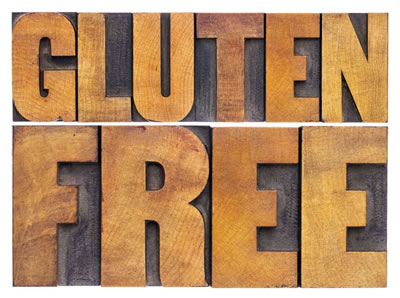[fusion_builder_container hundred_percent=”yes” overflow=”visible”][fusion_builder_row][fusion_builder_column type=”1_1″ background_position=”left top” background_color=”” border_size=”” border_color=”” border_style=”solid” spacing=”yes” background_image=”” background_repeat=”no-repeat” padding=”” margin_top=”0px” margin_bottom=”0px” class=”” id=”” animation_type=”” animation_speed=”0.3″ animation_direction=”left” hide_on_mobile=”no” center_content=”no” min_height=”none”][fusion_text] [/fusion_text][/fusion_builder_column][fusion_builder_column type=”1_1″ last=”yes” spacing=”yes” center_content=”no” hide_on_mobile=”no” background_color=”” background_image=”” background_repeat=”no-repeat” background_position=”left top” hover_type=”none” link=”” border_position=”all” border_size=”0px” border_color=”” border_style=”” padding=”” margin_top=”” margin_bottom=”” animation_type=”” animation_direction=”” animation_speed=”0.1″ animation_offset=”” class=”” id=””][fusion_title size=”1″ content_align=”left” style_type=”default” sep_color=”” margin_top=”” margin_bottom=”” class=”” id=””]Gluten Free Baking[/fusion_title][/fusion_builder_column][fusion_builder_column type=”1_1″ background_position=”left top” background_color=”” border_size=”” border_color=”” border_style=”solid” spacing=”yes” background_image=”” background_repeat=”no-repeat” padding=”” margin_top=”0px” margin_bottom=”0px” class=”” id=”” animation_type=”” animation_speed=”0.3″ animation_direction=”left” hide_on_mobile=”no” center_content=”no” min_height=”none”][fusion_text]Food product lacking gluten, including any species of wheat, rye, barley, spelt or triticale, and wheat flour or wheat starch.
[/fusion_text][/fusion_builder_column][fusion_builder_column type=”1_1″ last=”yes” spacing=”yes” center_content=”no” hide_on_mobile=”no” background_color=”” background_image=”” background_repeat=”no-repeat” background_position=”left top” hover_type=”none” link=”” border_position=”all” border_size=”0px” border_color=”” border_style=”” padding=”” margin_top=”” margin_bottom=”” animation_type=”” animation_direction=”” animation_speed=”0.1″ animation_offset=”” class=”” id=””][fusion_title size=”1″ content_align=”left” style_type=”default” sep_color=”” margin_top=”” margin_bottom=”” class=”” id=””]Gluten Free Baking[/fusion_title][/fusion_builder_column][fusion_builder_column type=”1_1″ background_position=”left top” background_color=”” border_size=”” border_color=”” border_style=”solid” spacing=”yes” background_image=”” background_repeat=”no-repeat” padding=”” margin_top=”0px” margin_bottom=”0px” class=”” id=”” animation_type=”” animation_speed=”0.3″ animation_direction=”left” hide_on_mobile=”no” center_content=”no” min_height=”none”][fusion_text]Food product lacking gluten, including any species of wheat, rye, barley, spelt or triticale, and wheat flour or wheat starch.
Gluten-free (GF) products are consumed by individuals who have celiac disease, and are therefore gluten intolerant. Individuals affected by celiac disease cannot digest gluten. If gluten is consumed, the villi lining the small intestine are permanently damaged inhibiting the absorption of nutrients. Since gluten is the primary protein of wheat flour, gluten-free breads must use alternative flours and additives to create a like-product safe for gluten-intolerant consumers. GF breads, bagels, muffins, tortillas, cereals, and cookies are all baked goods found on grocery store shelves catering to individuals with gluten intolerance.
Since gluten is the primary source of the network that retains the carbon dioxide from the leavening systems, replacing this function creates a challenge in formulating for gluten-free products. There is no single ‘protein replacement’ solution for this. Therefore, the replacement of gluten needs to be accomplished by multiple ingredients. Usually, this is accomplished with a combination of a carbohydrate source like non-wheat flours (eg: buckwheat flour, sorghum flour or rice flour), a protein source (like egg, soy isolate or milk), modified starches and gums (eg. guar or xanthan gum). Using these in combination increases the viscosity and strength of the batter/dough, and therefore helps in improving the volume of the product and enhancing its texture.
Most GF bakeries are dedicated facilities without the presence of wheat. Unfortunately, due to poorly sanitized distribution systems, wheat grains sometimes chance onto non-wheat flour prior to delivery to the bakeries. In addition, some bakeries are not dedicated GF bakeries, and have wheat flour dust in the air. Due to these mishaps, the FDA proposed to use < 20 ppm gluten as one of the criteria to define the term GF.[/fusion_text][/fusion_builder_column][fusion_builder_column type=”1_1″ background_position=”left top” background_color=”” border_size=”” border_color=”” border_style=”solid” spacing=”yes” background_image=”” background_repeat=”no-repeat” padding=”” margin_top=”0px” margin_bottom=”0px” class=”” id=”” animation_type=”” animation_speed=”0.3″ animation_direction=”left” hide_on_mobile=”no” center_content=”no” min_height=”none”][fusion_title size=”2″ content_align=”left” style_type=”default” sep_color=”#cfcfcf” margin_top=”” margin_bottom=”” class=”” id=””]Gluten-Free Baking Related Articles[/fusion_title][fusion_text]
1
- 10-Step New Product Innovation Process
A
- Acetic Acid
- Acids
- Adipic Acid
- Agave
- Almond Flour
- Amaranth Flour
- Ammonium Sulfate
- Annatto
- Antioxidants
- Ascorbates
- Ascorbyl Palmitate
B
- Baking Soda
- Bases
- Beet Sugar
- Brown Rice Flour
- Brown Rice Syrup
- Brown Sugar
- Buckwheat Flour
- Buttermilk
C
- Calcium Phosphate
- Caramelization
- Carboxymethyl Cellulose (CMC)
- Carob Powder
- Carrageenan Gum
- Cellulose Fiber
- Chelating Agents
- Chicory Root Fiber
- Chocolate Liquor
- Clean Label
- Cocoa Butter
- Cocoa Powder
- Corn Starch
- Cornmeal
- Cream of Tartar
D
- Dehydrated Garlic
- Dry Yeast
E
- Egg
F
- Faba Beans
- Fat Substitutes
- Fiber
- Fish Allergy
- Flaxseed
- Flaxseed Flour
G
- Garbanzo Bean Flour
- Glucono Delta Lactone (GDL)
- Glucose
- Gluten-Free
- Gluten-free Certification
- Gluten-free Cookies
- Gluten-free Flours
- Granulated Sugar
- Grits
- Guar Gum
- Gums
H
- High Fiber
- High Fructose Corn Syrup
- How to Determine Bakery Product Process Costs
- Hydrogen Peroxide
I
- Inulin
L
- Lard
- Leavening Acids
M
- Maillard Reaction
- Manufacturing Execution Systems for Millers and Bakers
- Milk
- Moisture
- Mono And Diglycerides
N
- Natamycin
- Non-Fat Dried Milk (NFDM)
O
- Oil
P
- Pea Protein
- pH
- Polyunsaturated Fat (PUFA)
- Potassium Bicarbonate
- Potassium Chloride
- Potato Flour
- Powdered sugar
- Prebiotics
- Probiotics
- Product Lifecycle Management (PLM)
Q
- Quinoa Flour
S
- Salt
- Sodium Acid Pyrophosphate (SAPP)
- Sodium Aluminium Sulfate (SAS)
- Sodium Reduction
- Soluble Fiber
- Sorghum
- Sorghum Flour
- Sprouting
- Sugar
- Sweeteners
T
- Tapioca Flour
- Trans Fat
W
- Water
- White Sorghum Flour

